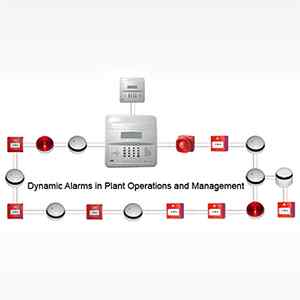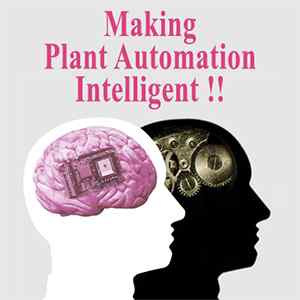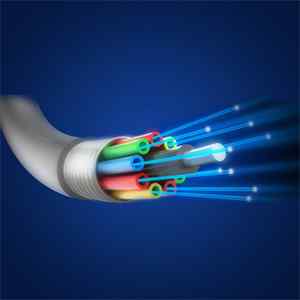Articles
Dynamic Alarms in Plant Operations and Management

Gone are the days that undervalued and underutilized alarms in production plants. Now, all the processes and operations are in line and co-ordinate with alarm installed in the plants. So, the alarm systems have the significant part in the operator interfaces to large modern industrial facilities, providing vital support to the operators by warning them of situations that need their attention and have an important role to prevent, take control and mitigate the effects of abnormal situations.
The recognition of alarm system importance in operational excellence is the major break through for alarms evolution. Alarms respond through signaling in different ways, like visual, audible, combination, telephone etc. Industrial plants, control rooms, new plants, etc requires different types of alarms for improved alarm handling that is useful for most industrial process types and complex technical products. Operations managers, process engineers, operators, system design engineers, and safety and reliability engineers are the right people to involve in developing alarm management systems or rationalizing existing systems can brings out successful and effective industrial alarms.
Alarm systems of one type or another always have been part of industrial machine, robot, and skid control systems and its technology has experienced progress from panel indicating lights, through light boxes, to fully-featured Programmable Logic Controller (PLC), Human Machine Interface (HMI) systems. While, the HMI/PLC systems have virtually unlimited alarm capabilities are configured through software for maximum flexibility and compatibility with the plant working format. One of the main features HMI alarm packages provide is the ability to custom-configure alarm notification.
Software-Configurable Alarm Systems
The HMI/PLC based alarm systems are by default configured with software. These Software-configurable alarm systems are very powerful, flexible and compatible. Though the requirements such as very-high-speed, fail-safe operation, and compliance with certain safety standards are not effectively addressed
Most HMI/PLC alarm systems are configured with software. Software-configurable alarm systems are very powerful and flexible, but don't effectively address requirements such as very-high-speed, fail-safe operation, and compliance with certain safety standards. Very-high-speed requirements are best addressed with hardware-centric alarm systems and these hardware-based systems can be programmed with external software packages or through on-board interfaces, actual alarm execution is hardware-based.
Smart Alarm Management in Plants
The growing dynamism in plant processes evolved with dynamic range of alarms, which has the capability to control the process or alarms through all process states with accuracy and confidence. The larger the plants, the more number of alarms are required. So it’s about the chain of alarms covering the whole plant processes. These larger volume of alarms need to be dealt with modify alarm settings dynamically to correspond with changing process conditions and operating modes. As a result comprehensive alarm management softwares have come up that includes:
Context-Driven Operator Interfaces brings essential information to plant operating team to facilitate decision-making with crucial capabilities. The plant is enabled by applications that are to be informed to plant personnel and provide practical information in context with existing operating conditions. While, the information will be housed in multiple disparate databases becomes searchable as if it were in a single database, and the search is filtered so as to be relevant to the task currently being performed.
Managing Complexity in smart plants requires very large number of measurements, affiliated applications and interoperability of plant systems creates an automation environment that empowers plant operating team to manage without assistance. Hence, the nature of automation systems is that they continually undergo change in service of continuous plant improvement.
Smart plants cannot be created in a single transaction, except the layout is a grassroots facility designed right from the ground up to incorporate smart technologies.
Mile stones of industrial alarm innovations…
Programmable Logic Controller (PLC) and Human Machine Interface (HMI) systems
GE Fanuc's Cimplicity Machine Edition is an HMI which has integrated alarm management capabilities and can be used to configure alarm notification based on the requirements like priority, user roles, and user location. These configurable alarm views let users customize their screen the way they want, like from a PC monitor, to a cell phone or to a pager. While, the Alarm and event information is also tightly integrated into advanced applications to provide extensive downtime analysis about what occurred, when, why and how was the problem fixed, so that a user can extend use of existing assets and improve productivity. Though hardware-based alarm systems are inexpensive and out-perform with speed and safety against HMI/PLC systems, but these lack sophisticated diagnostic capabilities.
Life Cycle Management of Alarms
A Honeywell company, Matrikon is specialized and leading in the areas of alarm management, OPC connectivity and control asset monitoring has identified a six-step process for life cycle management of alarm systems.
- » Benchmarking and assessment of an alarm system performance need to take place against industry guidelines such as EEMUA’s document 191.
- » Alarm philosophy document that is a definitions collection of governing rules for alarm settings to ensure the rest of the alarm management lifecycle is executed consistently throughout the plant and the organization.
- » Alarm rationalization step reviews and rationalizes the each configured alarm in the control system based on the alarm philosophy document.
- » Implementation and execution is the implementation of the rationalized alarm settings on the automation systems, where transitional training is required.
- » Maintenance involves long-term alarm system performance monitoring, through which a plant integrates alarm management into existing workflows and establishes change procedures for alarm management.
- » Continuous improvement identifies new opportunities for advanced alarm management strategies like dynamic alarming and early event detection.
Beyond Alarm Management
PlantState Suite (PSS) Alarm Management is software from PAS and NovaTech. This is a comprehensive alarm management and operations support software suite that can facilitates event analysis, documentation and rationalization, auditing and enforcement, and dynamic alarm management to optimize any alarm system in any industry. The PSS ensures that operators are presented with only the most important alarms requiring intervention and can take appropriate action before an upset or accident occurs.
Today, every small to big plant is equipped with alarms. The modern automation and IT infrastructure built on network-based instrumentation, using modern asset management and alarm management systems. While, very few have deployed dynamic alarming which automatically adjusts alarm settings with respect to different operating modes. A minor number of plants have installed automation configuration management systems, and context-based process knowledge systems that are completely new to most of the industry.
Ultimately, there is a strong requirement of robust alarm systems that fulfills the requirements of different industries and sizes. So, technologies are well studied and understood in all the angles. As large the scope for industrial alarms the more it is recognized by industries in terms of manufacturing them and adapting them.





